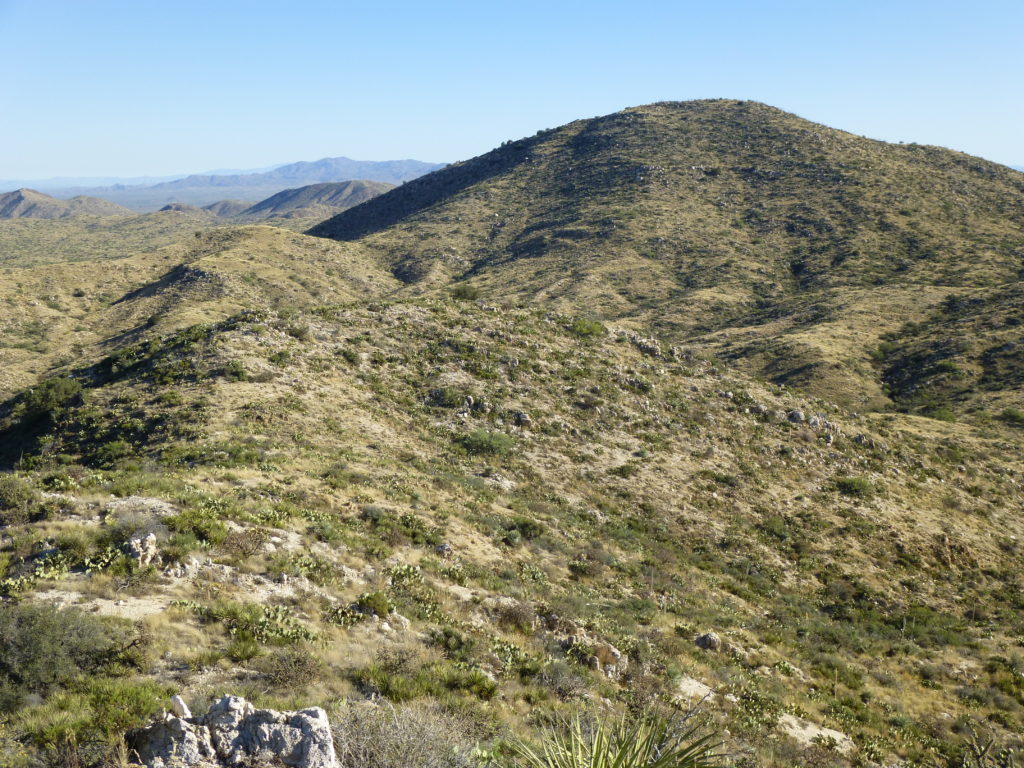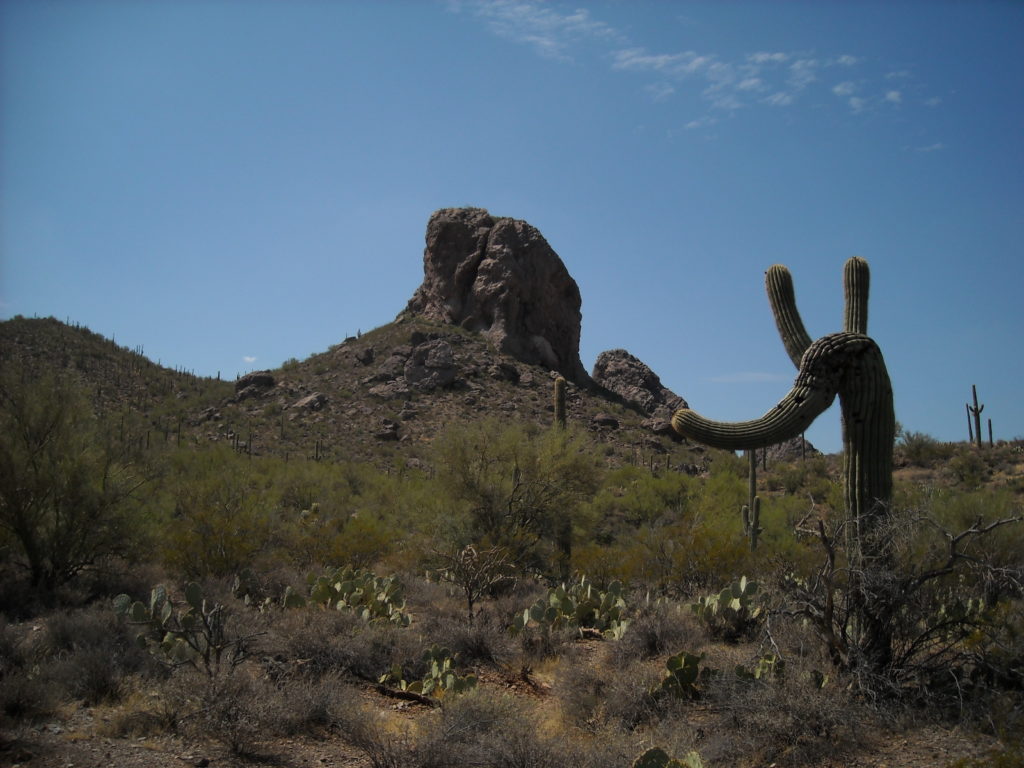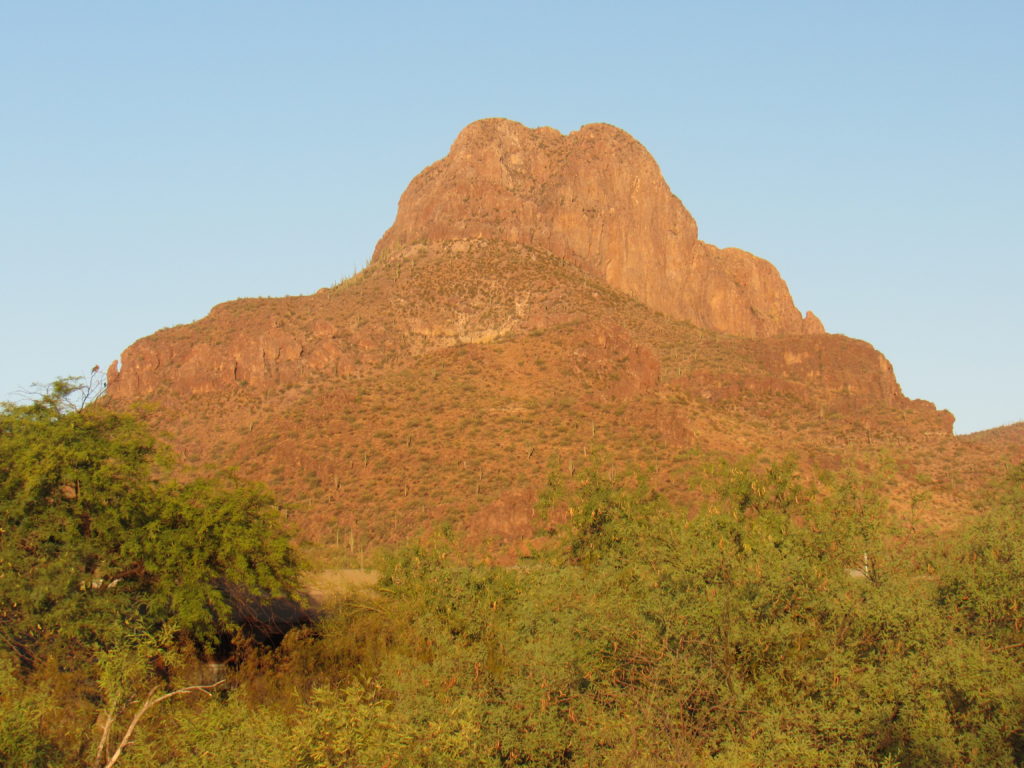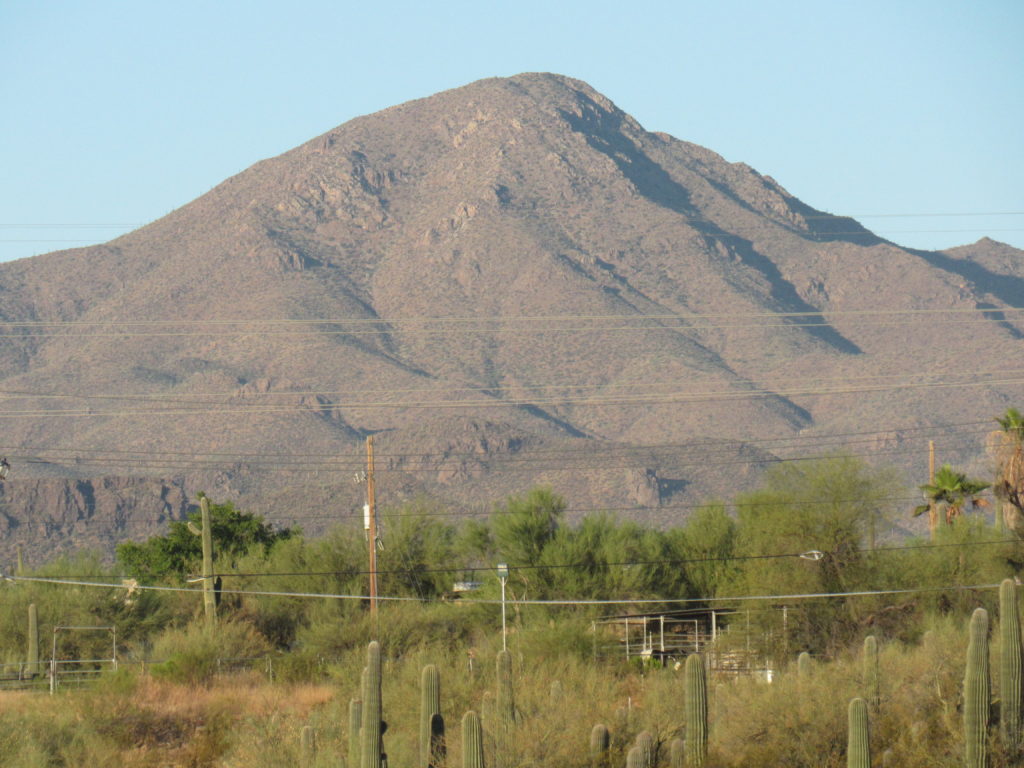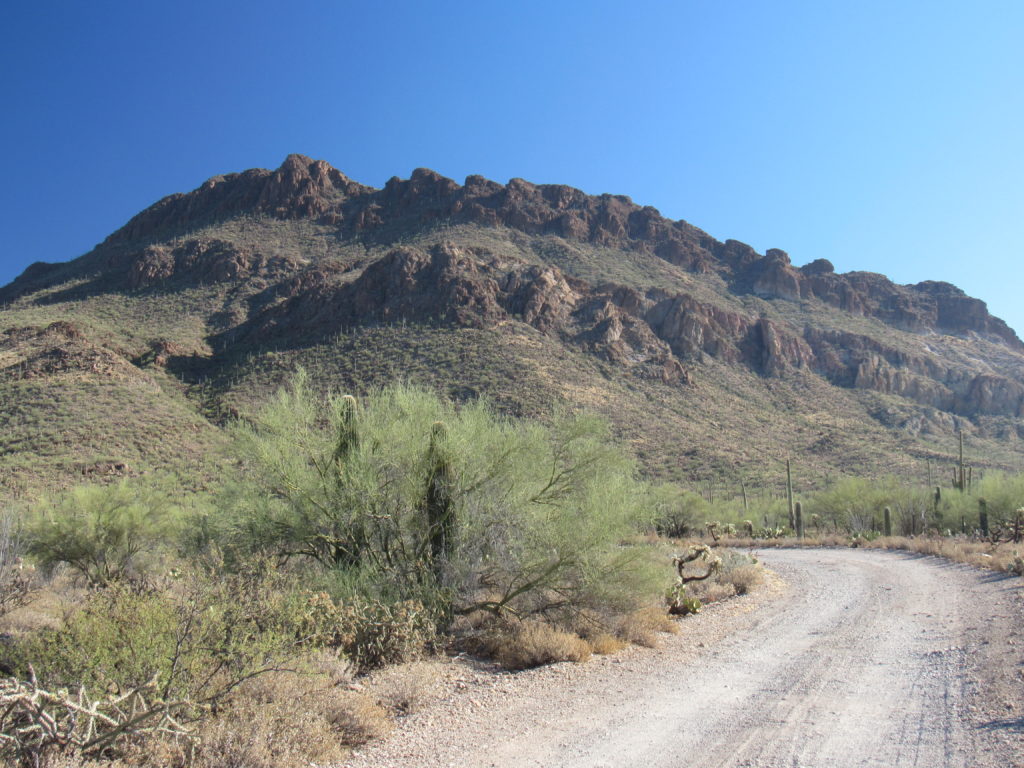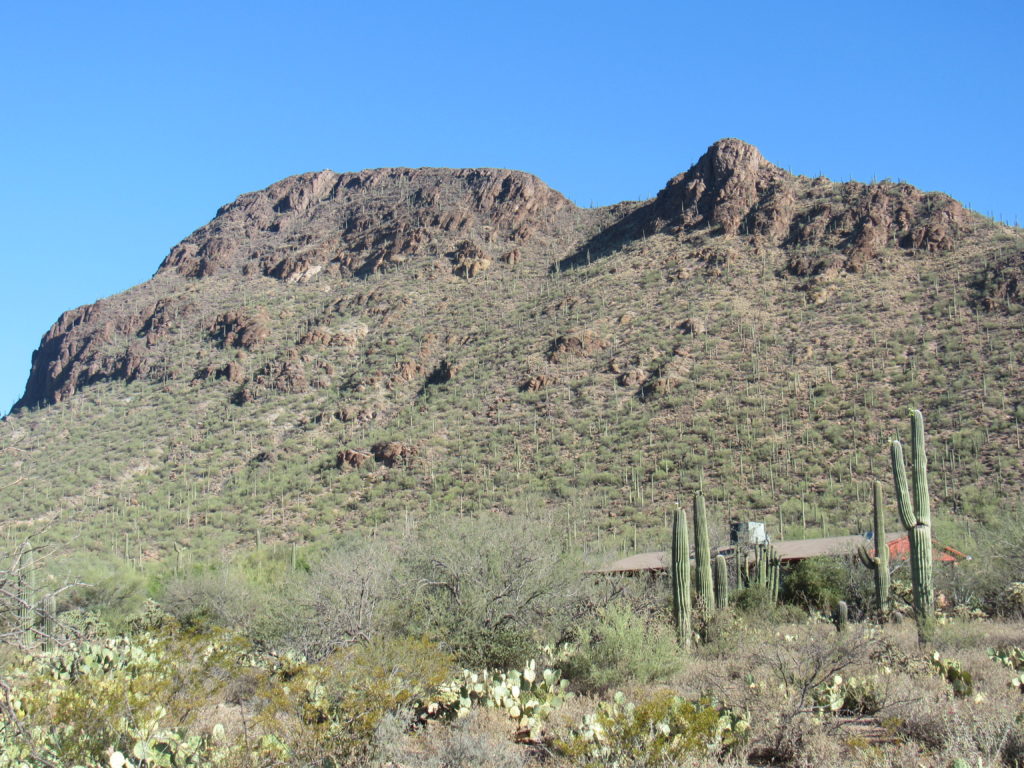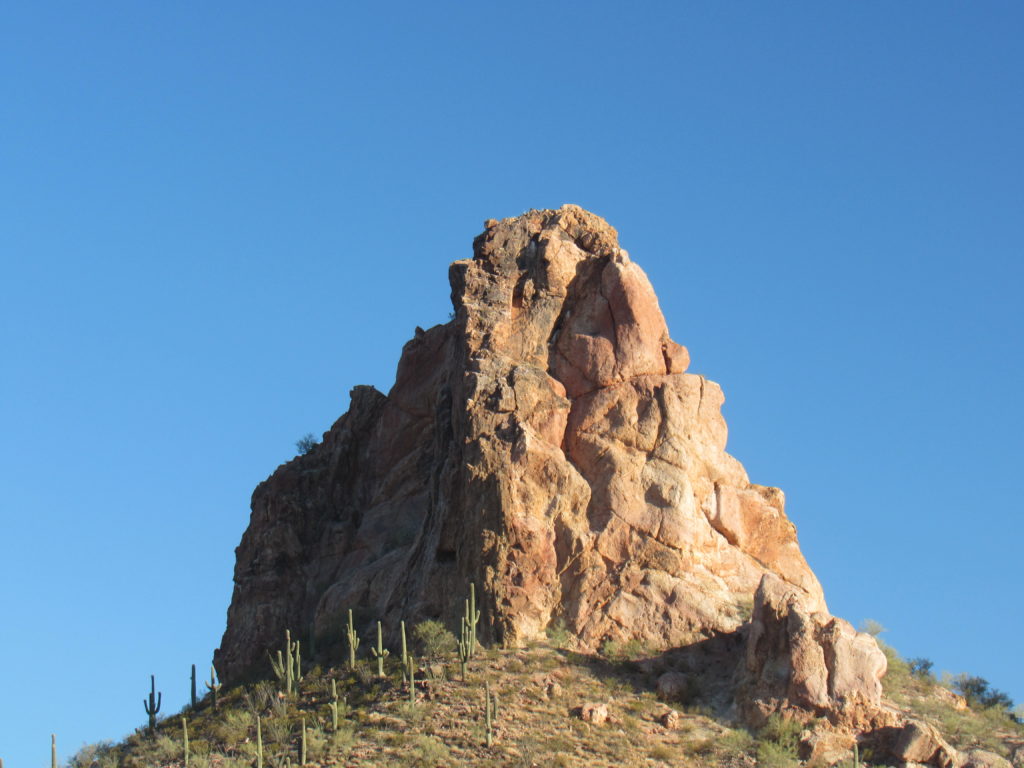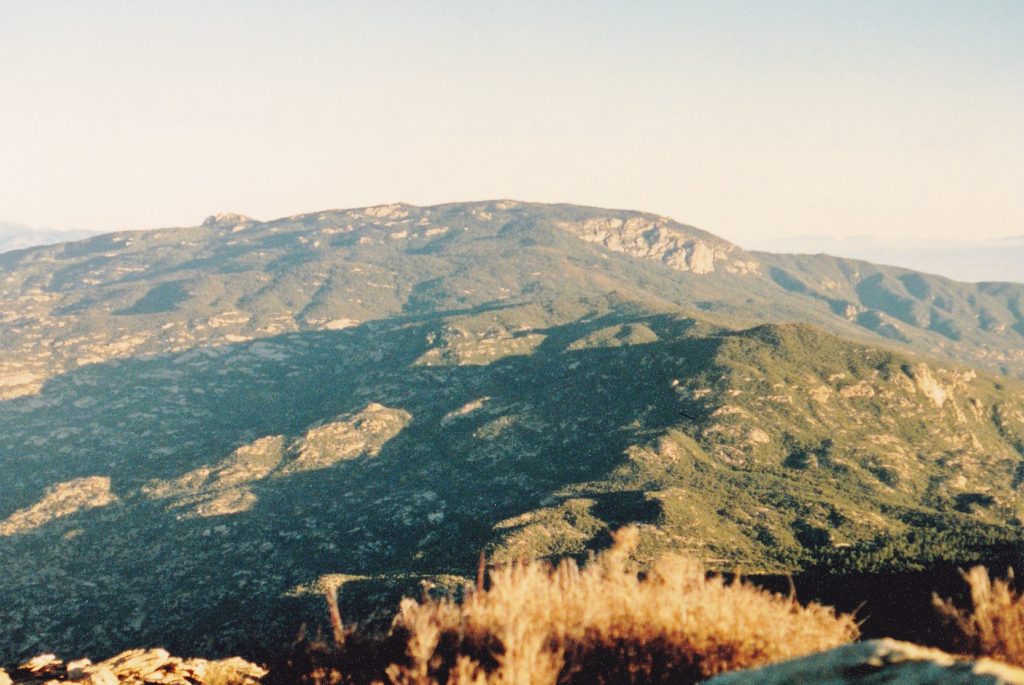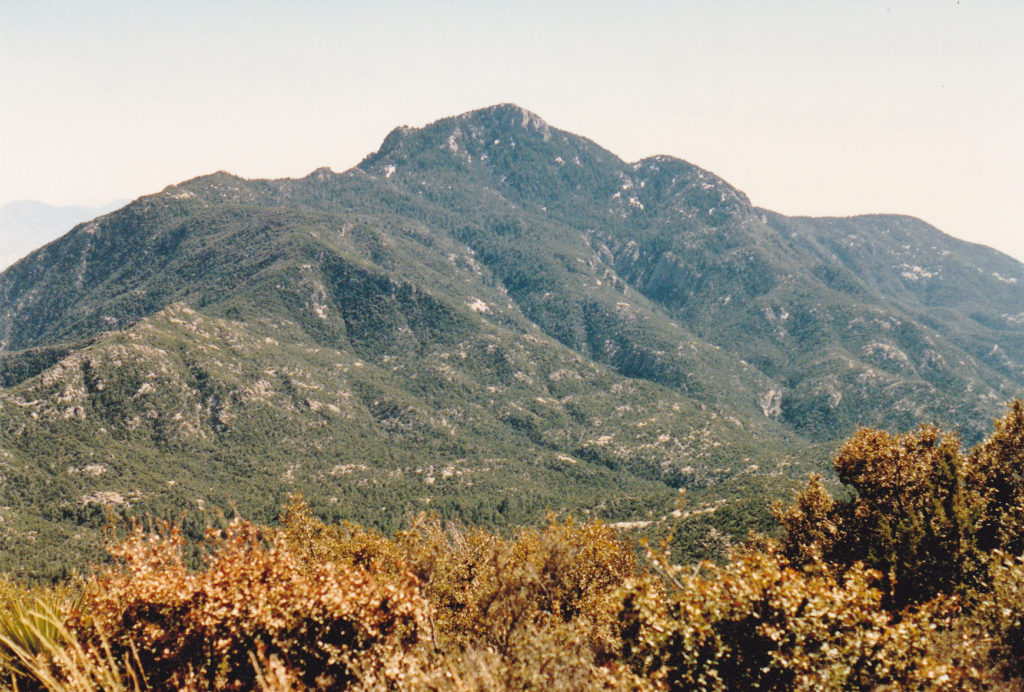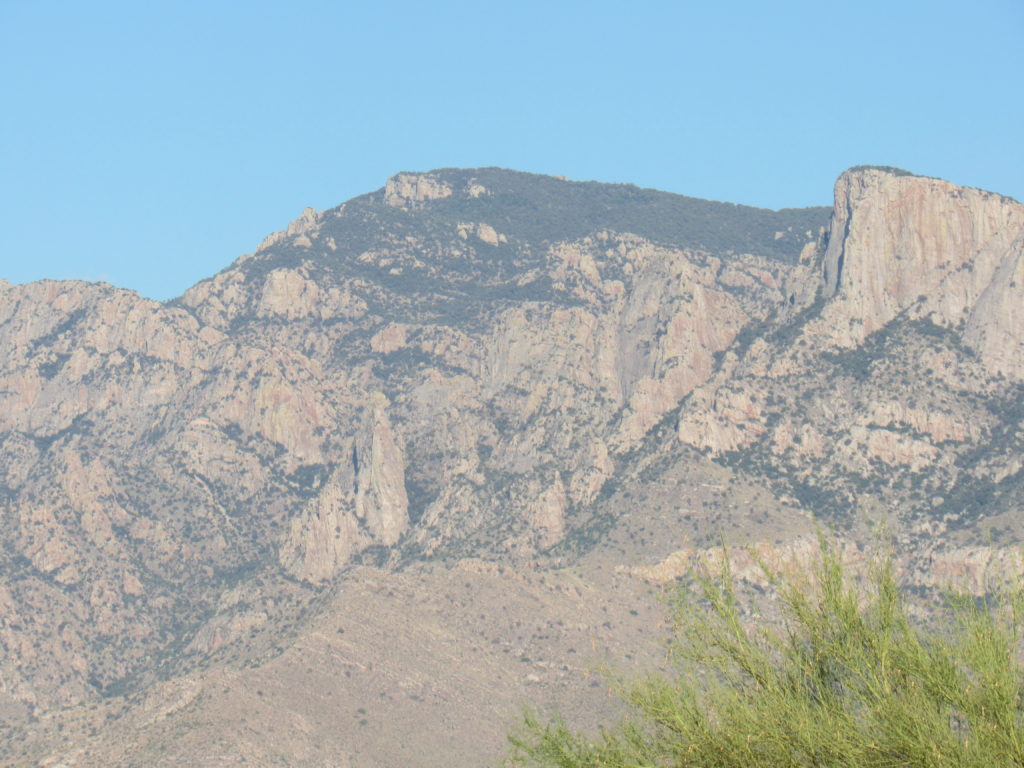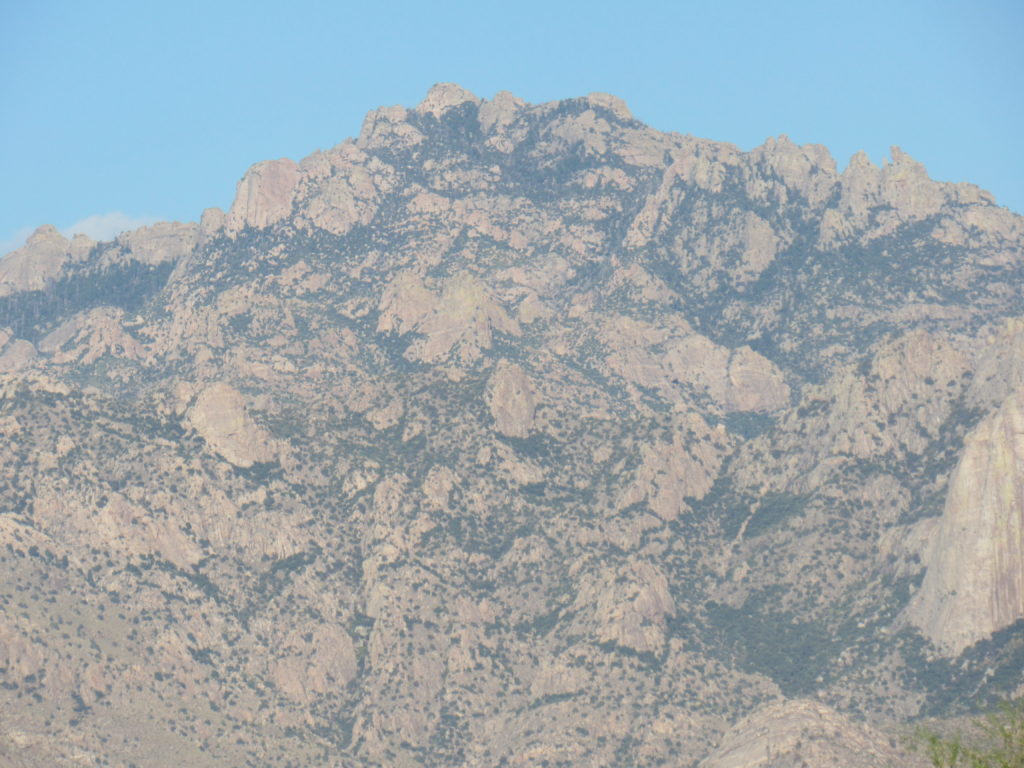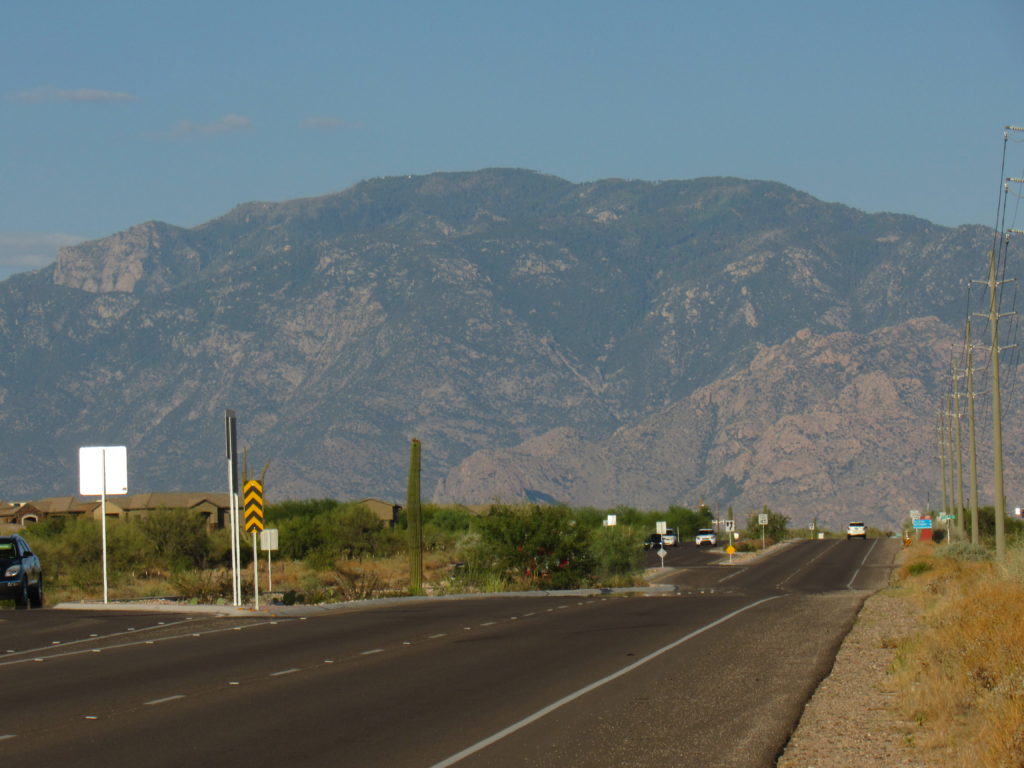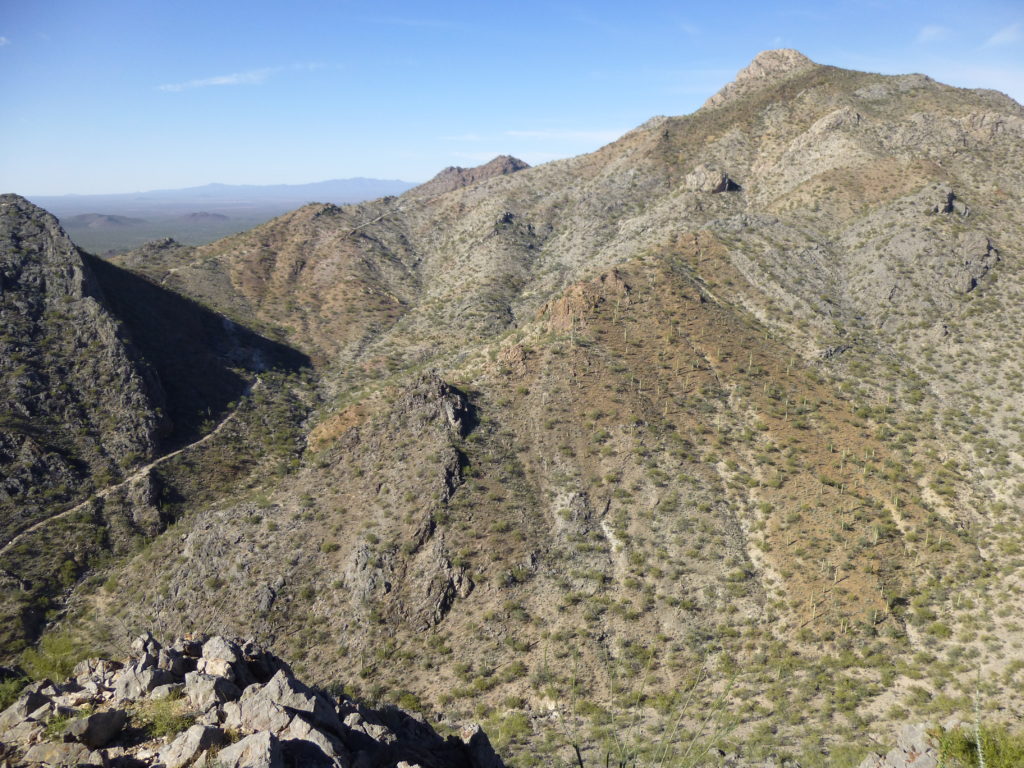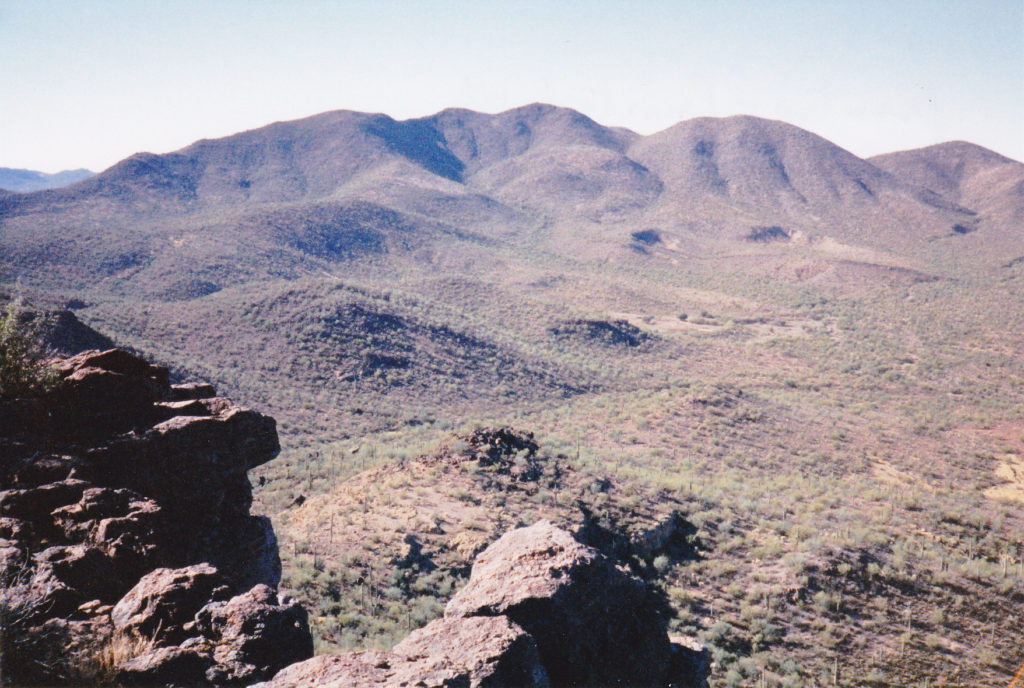I’m lucky enough to live in a place where I’m surrounded by mountains, lots of them. Arizona as a whole has about 7,500 which is plenty enough to go around, and southern Arizona certainly has its share. I’m going to try to show you just how fortunate I am to live in such a terrific place. Let me start by painting a picture of the setting of Tucson, my home.
Four of Arizona’s 193 mountain ranges form a ring around the city. To the northwest sit the Tortolita Mountains. If we include Owl Head Buttes and the area of Falcon Divide in the north, the range is about 12 miles long, north to south. Measured east to west, it covers 10.
A much larger range spreads across the northern edge of the city. The Santa Catalina Mountains are high, wooded and cool, rising to 9,157 feet, a refuge from the summer heat. From west to east, the range spans 27 air miles; north to south, 26.
The eastern edge of the city abuts the Rincon Mountains, which rise to a cool 8,664 feet. From west to east, they cover 19 miles; north to south, an impressive 20 as the crow flies.
Next comes the range all along the west side of the city, the Tucson Mountains, 24 miles long north to south, by as much as 6 wide.
Now I’d like to talk about the peaks themselves. Let’s start with the Tortolitas (this means “little turtle dove” in Spanish). Less than 13 miles to the NNE of my home sits Peak 4696, known by some as Jeffords Peak. It is the high point of the range, and has a rise of 1,156 feet (okay, let’s use the modern term of “prominence” instead). This classifies it as a 1K peak, meaning it has over 1,000 feet of prominence, which paints a bulls-eye on it for peakbaggers.
The range itself, although not large by most standards, can still boast 17 peaks, and all of them lie within 16 miles of my home. Not a bad start, eh? Oh yes, one of them, North Owl Head Butte, is a nice little technical climb.
Next, let’s examine the Tucson Mountains. The eastern side of this range lies only 4,900 feet away from my front door. Although a full 24 miles in length, the range never exceeds 6 miles in width and that only in the middle near its apex. It’s long and narrow, kind of like a snake that swallowed a watermelon. It may not be a huge range, but boy, it sure does have some nice peaks. I can look out my window and have a front-row seat for Safford Peak (1,073 feet of prominence). The summit of this beauty is a mere 1.8 miles from home. Many of the locals call it Sombrero Peak, as it does resemble a hat when seen from certain angles. There are some fun Class 3-4 routes right up the middle of the east side.
Just a bit farther is Wasson Peak, the range high point, at 4,687 feet. With 2,122 feet of prominence, it towers over the city and is immediately recognizable to all Tucsonans. This one is known as a 2K peak, as it exceeds 2,000 feet of prominence, and it’s only 6 miles from my door. Excellent trails wind their way to its summit.
The Tucson Mountains offer still more delights. How about Golden Gate Peak, a mere 10 miles from home? This is another 1K prominence (1,138 feet to be exact), and it looms above the west side of the range. Its crenelated south ridge is quite striking and distinguishes the peak from a long distance.
Close by sits Cat Mountain, elevation 3,852 feet, with 1,062 feet of prominence (yet another 1K). This is a lovely Class 3+ climb, and it rises sharply from Highway 86 near the south end of the range. It’s close, less than 13 miles from home. Don’t let this one lull you into a false sense of “Oh, it looks pretty easy” – it is well-guarded by cliffs, and several people have died on it over the years.
Most of the range sits within protected areas, Tucson Mountain Park and Saguaro National Park West. There’s even one technical climb, Beehive Peak (it’s aptly named as many who’ve climbed it have been stung, including Yours Truly). This picture shows the southeast side, but most climb it via the north.
With 35 peaks, this range is no slouch, and none of them is farther than 20 miles from my door.
Wow, I’m getting excited just telling you about these peaks. I’ll continue with the range farthest from my house, the Rincon Mountains. The word rincón means “corner” in Spanish, alluding to the shape of the range as a right angle with Mica Mountain at its apex. The Rincons are about 20 miles across in any direction, and a big chunk of the range is in Saguaro National Park East and also in the Saguaro Wilderness Area. I count 24 peaks in the entire range, and although that’s not a large number, don’t be fooled – some of them are a real challenge to reach. You won’t make the summit of Mica Mountain, elevation 8,664 feet (the range high point) with less than 26 miles of round-trip effort. It has 4,604 feet of prominence (we’d call it a 4K) and is one tough day-climb. Its summit is 35 air miles from home, but I can be at the trailhead in an hour.
A slightly lower summit within the range is Rincon Peak. It is 8,482 feet high, and although it has only 2,302 feet of prominence (another 2K), it’s grueling enough, even though the climb is all on trails, to ruin your whole day. It’s 39 miles from home.
Nearby is Valley of the Moon, a remote spot which has been visited by so few you could count them on the fingers of one hand and still have fingers left over.
Perhaps in some ways I’ve saved the best for last. The Santa Catalina Mountains tower over much of Tucson. The name means “Saint Catherine” in Spanish. It’s no coincidence that 3 of the 4 ranges that surround the city have Spanish names, as this reflects the Mexican heritage of the region. Where to begin? How about peaks? I count no less than 63 of them. Some of them are technical climbs – Thimble Peak, Prominent Point and possibly Peak 5420 and Cathedral Rock.
There are several high-prominence peaks. Mount Kimball has 1,118 feet (a 1K, and 14 miles away). There’s a trail to the top – it’s steep, and a real quad-buster. In this view, it rises 4,800 feet above us.
Cathedral Rock has 1,937′ (almost a 2K, and 16 miles away). This view is of the west side, and it’s just like it looks – thousands of feet of cliffs. You don’t want to get off track up there, or you’ll be in a world of hurt. The final bit to the summit is a gritty, exposed Class 4 which has scared off plenty of people. In this view, it looms 5,500 vertical feet above my location.
Then there’s the paterfamilias of them all – Mount Lemmon, the range high point at 9,157 feet. This cool, high, wooded peak has 5,177 feet of prominence, which puts it into a very special category known as an Ultra-Prominence Peak (anything with 5,000 feet or 1,500 meters of prominence). I can see the summit of Mount Lemmon from my house, and it is only 20 miles distant. Atop it sits an observatory with 8 telescopes (60, 60, 40, 39, 32, 28, 24, and 20 inches). In this view, the mountain towers 6,700 feet above me, and if you look really hard you can see tiny white dots on the skyline to the left of center – those are some of the domes for the scopes.
Just for fun, I drew a circle with a radius of 20 miles, centered on my house. I wanted to see what exactly was within that circle, and here’s what I learned. None of the peaks in the Rincon Mountains made it; neither did Agua Caliente Hill in the Catalinas. However, inside the circle fell 10 peaks in a range to the west called the Waterman Mountains, and one of them, Waterman Peak, has 1,260 feet of prominence. Here’s a look at its east side.
Four of the peaks in a group called the Samaniego Hills fell within the circle. Another range, the Roskruge Mountains, had 17 peaks inside the circle, and one of them was a 1K prominence, namely Roskruge Benchmark.
The Silverbell Mountains also contributed one, and even a lonely summit called Desert Peak made it.
At the beginning of this piece, I said I was lucky to live so close to so many fine mountains. Do you agree? To recap, within 20 miles of my house are eight 1K peaks, one 2K peak and one 5K peak. And then consider this – within that same 20 miles lie a whopping 103 total peaks. I throw out the challenge to other peakbaggers from other parts of the country or anywhere else in the world for that matter – do any of you have such a gallery of peaks within 20 miles of your home?

